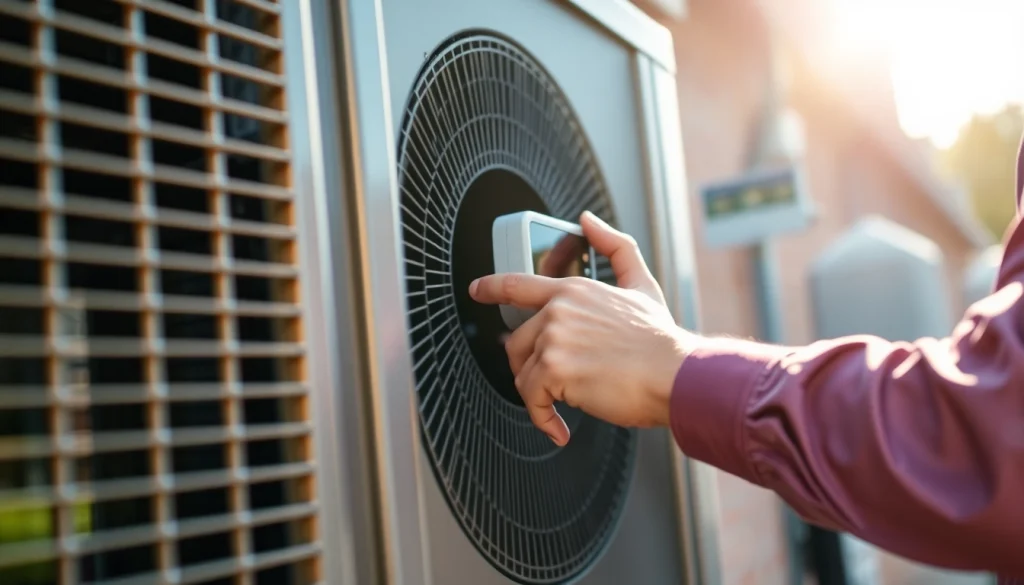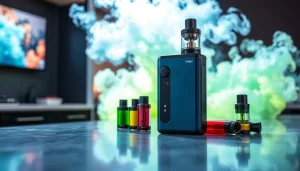7 Common Reasons Your Central Air Conditioner Is Not Blowing Cold and How to Fix Them

Understanding Your Central Air Conditioner
A central air conditioning system is essential for ensuring comfort in your home during those scorching summer months. However, encountering issues where the central air conditioner is not blowing cold air can be frustrating. Understanding your unit and its components is the first step toward diagnosing the problem effectively. This article delves into the specific reasons why your air conditioning might fail to cool and offers practical troubleshooting steps.
What Does It Mean When Your AC Is Not Blowing Cold?
When your central air conditioner fails to blow cold air, it typically indicates a malfunction in the system that prevents it from cooling efficiently. This issue can stem from various factors, such as refrigeration problems, thermostat issues, or airflow obstructions.
How a Central Air Conditioner Works
Understanding the inner workings of your air conditioner can help you pinpoint the problem. Central air conditioning systems function by circulating cooled air through ducts via a split system, typically consisting of an outdoor compressor and an indoor evaporator. The process begins with the refrigerant absorbing heat from inside the home, which is then released outdoors through the condenser.
Any breakdown in this cycle can lead to insufficient cooling; thus, familiarity with key components—such as the compressor, evaporator coils, and refrigerant—is crucial for effective troubleshooting.
Signs of AC Trouble You Should Not Ignore
It’s essential to recognize early warning signs that your air conditioning unit may be malfunctioning. Common indicators include:
- Increased indoor humidity levels despite air conditioning being operational.
- Warm air blowing from the vents.
- Unusual noises such as grinding or squealing.
- Visible ice buildup on the refrigerant lines or in the unit.
- Frequent cycling of the system, turning on and off more than usual.
Top Causes of Central Air Conditioner Not Blowing Cold Air
Refrigerant Leaks and Their Impact
One of the primary reasons your central air conditioner might not be blowing cold air is a refrigerant leak. The refrigerant is the substance that cools the air in your cooling system; without adequate levels, the unit cannot function properly. Signs of a refrigerant leak include:
- Increased utility bills due to the system working harder.
- Ice buildup on the coils indicating low pressure.
- Hissing sounds near the refrigerant lines.
Not addressing a refrigerant leak could not only leave your home warm but may also result in further damage to the system due to continual operation under stress.
Thermostat Issues and Temperature Settings
Sometimes, the problem may lie with the thermostat settings. A malfunctioning thermostat can lead to incorrect temperature readings, causing the AC unit to operate inappropriately. Check for:
- Incorrect temperature settings or mode (cool vs. heat).
- Calibration issues with the thermostat.
- Loose or damaged wiring connected to the thermostat.
Ensuring that your thermostat is set correctly and functioning as intended can resolve many cooling problems before they escalate.
Dirty Air Filters and Blocked Vents
A frequently overlooked culprit behind inadequate cooling capabilities is dirty air filters and blocked vents. Air filters can become clogged with dust and debris, restricting airflow throughout your home and forcing your AC unit to work much harder:
- Check air filters monthly and replace them every 1-3 months based on usage.
- Ensure that vents are clear of obstructions such as furniture or heavy curtains to allow proper air circulation.
Troubleshooting Steps to Take
How to Check Your Thermostat Settings
If your air conditioner isn’t cooling properly, the first step in troubleshooting is to check your thermostat settings. Make sure it is set to “cool” mode and the temperature setting is lower than the current room temperature. If you have a programmable thermostat, ensure it’s programmed correctly.
Inspecting the Outdoor Unit for Ice Buildup
Another critical step is checking the outdoor unit for ice buildup. Ice on the coils usually indicates that the system is overworked, typically due to low refrigerant levels or airflow issues. If you detect ice:
- Turn off the AC unit and let it thaw completely.
- Determine the cause of the ice buildup before restarting the unit.
What to Do When You Suspect a Refrigerant Leak
If you suspect a refrigerant leak, it’s crucial to contact a professional HVAC technician as soon as possible. They can perform a leak detection test, repair the leak, and safely recharge the system with the appropriate amount of refrigerant. Attempting to refill refrigerant on your own can be dangerous and is typically illegal without the proper certification.
When to Call a Professional for Help
Signs You Need Expert Assistance
Certain signs indicate it’s time to call in a professional HVAC technician. If you’ve tried troubleshooting with no success, or if you encounter any of the following, contact a professional:
- Unusual sounds or smells coming from the AC unit.
- Even after setting your thermostat, no cold air is flowing from the vents.
- Increased humidity levels indoors despite the AC running.
Understanding Service Costs for AC Repairs
When it comes to AC repairs, costs can vary widely based on the nature of the issue, the brand of the unit, and your geographical location. Common breakdowns can result in service calls ranging from $100 to $350 or more. Comprehensive repairs, such as refrigerant recharge or compressor replacement, can escalate to $600 or more.
It’s wise to request a diagnostic fee estimate and inquire if the diagnostic fee can be applied to the total repair cost. This helps ensure you’re not caught off guard by costs.
How Regular Maintenance Can Prevent Issues
Regular maintenance is key to avoiding future issues with your central air conditioning system. Scheduling an annual maintenance check can help you identify potential problems before they become significant. During the maintenance visit, a technician will typically:
- Inspect and clean air filters and coils.
- Check refrigerant levels.
- Inspect the ductwork and airflow.
- Ensure your thermostat is calibrated correctly.
Investing in preventative maintenance can help extend the lifespan of your unit and enhance its efficiency.
Maintaining Your Central Air Conditioner
Best Practices for Year-Round Care
Maintaining your central air conditioning system ensures it runs efficiently and prolongs its lifespan. Here are some best practices:
- Change filters regularly—every 1-3 months, depending on use.” angle=”0″ >. Filters are crucial in managing airflow and should be kept clean.
- Keep the outdoor unit clear of debris, including leaves, dirt, and blocked vents.
- Check refrigerant levels annually.
- Remove ice or snow during winter months if the unit is exposed to the elements.
Checking Air Filters Regularly
Dirty air filters not only restrict airflow but can also lead to more extensive system breakdowns if neglected. Make it a habit to check and replace the air filters. Regular inspections keep the unit working efficiently, lower energy bill costs, and improve indoor air quality.
Schedule Annual Professional Inspections
Beyond basic maintenance, scheduling annual inspections with a qualified HVAC professional can identify potential problems early. During these inspections, the technician will perform a comprehensive check of your system, ensuring everything is functioning optimally. This preventive measure helps avoid costly repairs down the line and keeps your central air conditioning system running smoothly.







